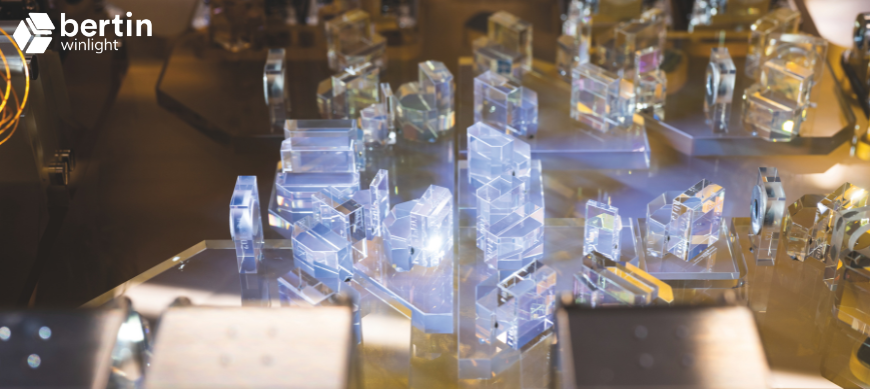Bertin Winlight, a Bertin Technologies business unit, is to contribute to the international LISA (Laser Interferometer Space Antenna) mission announced by the European Space Agency (ESA) in 2017. As part of this project, Bertin Winlight will be responsible for supplying the complex Beams Simulator optical system for ground-based equipment.
The LISA mission, scheduled for launch in 2035, aims to detect gravitational waves emitted by the most violent events in the Universe. To achieve this, three satellites will be placed in orbit around the Sun, on the same trajectory as the Earth, to form a gigantic laser interferometer located 50 million kilometres from our planet. Each arm of the interferometer will measure 2.5 million km. LISA is the result of a collaboration between ESA, NASA (National Aeronautics and Space Administration) and an international consortium of scientific laboratories, bringing together worldwide expertise in gravitational wave astronomy.
The LISA-France* part of the consortium will be responsible for instrument integration and testing, as well as the design and development of the scientific ground segment. As part of LISA-France, CNES will play a coordinating role between the French laboratories and industrial companies in order to allocate the various responsibilities of each.
CNES has two prerogatives: to manage the instrument’s interferometric performance tests on two prototypes of the IDS (Interferometric Detection System). Secondly, to provide test facilities for measuring and verifying the quantity and influence of stray light throughout the instrument’s optical line – this stray light (reflection/scattering in onboard optical instruments) being a major concern and needing to be kept as low as possible. In order to carry out these tests, a number of specific ground-based resources need to be developed, including an ultra-stable optical bench (Banc de Simulation Instrumentale Multichamps – BSIM) emulating the ‘Telescope’ and ‘Backlink’ optical interfaces with the LISA optical bench.
Through this project, Bertin Winlight has been commissioned by CNES to supply a complex optical system called Beams Simulator for final integration into the IDS instrument’s test and calibration bench. The entire project is divided into two phases. The first phase consists of studies: thermal and mechanical, dynamic and thermomechanical stability, hydroelastic effects, etc., at the end of which a critical design review (CDR) will be held. The second phase will involve manufacturing, assembly, integration, testing and delivery of the Beams Simulator to CNES, which will then proceed with final integration on the ground equipment.
The BSIM bench consists of around 80 very high-precision optical components (mirrors, splitter blades, compensators, out-of-plane supports, etc.), all polished and tested by Bertin Winlight. These components are complemented by around fifteen optical sub-assemblies such as monolithic injectors, as well as flat top and afocal systems. The unique aspect of this system is the use of molecular adhesion technology to integrate the optical sub-assemblies on the bench, a technology that Bertin Winlight has been mastering for more than 20 years.
With this new contract, CNES is renewing its confidence in Bertin Winlight, which already proved its worth in 2022 when it supplied the Beams Simulator demonstrator for the IDS instrument. Bertin Technologies and its Bertin Winlight Business Unit are thus strengthening their position in the space market, thanks to their experience in the design and production of cutting-edge optical and opto-mechanical components and systems for large-scale space projects (Mars 2020 and CO2M missions, MetOp-SG and 3rd generation Meteosat programmes, etc.).
*Institut Fresnel, Astroparticle and Cosmology Laboratory (APC), ARTEMIS/ Observatoire de la Côté d’Azur (OCA), Marseille Astrophysics Laboratory (LAM), Marseille Particle Physics Centre (CPPM), Advanced Materials Laboratory (LMA), Paris Observatory.

